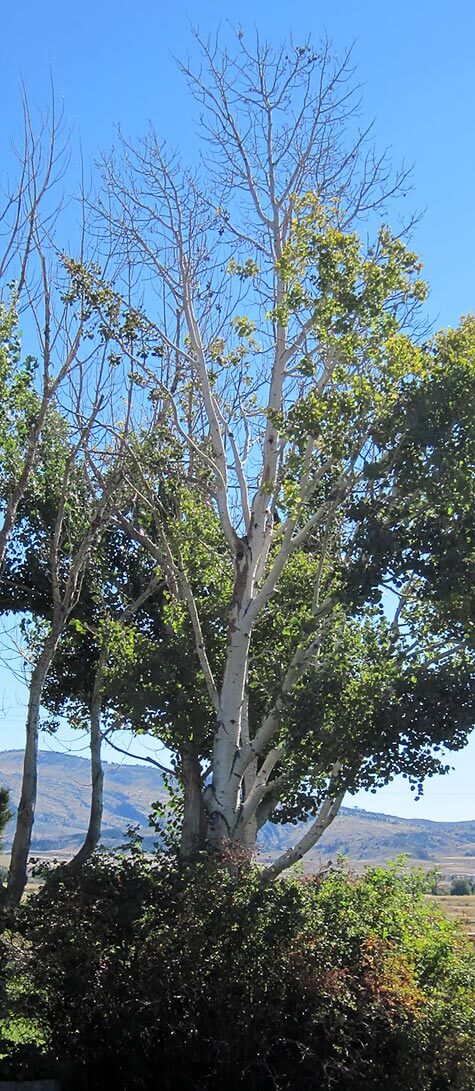
The largest organisms in your landscape are trees. At maturity the weight of trees are calculated in tons. Some trees like the Plains Cottonwood–Wyoming’s State Tree–can transpire upwards of 500 gallons of water a day on a warm summer day. But how on earth do trees survive the extreme cold of a Wyoming winter?
Think molasses in January. Trees develop antifreeze; that is to say at the cellular level they greatly reduce the amount of water within their cells and replace that water with sugars. These sugars don’t expand much and with so little water in the cells, the cells don’t over expand when the limited water freezes and expands.
In fact in most cases the water never really freezes solid, all thanks to the antifreeze properties of sugar. Although one would think molasses left outside in January would be frozen solid, it is for the same reasons the water in trees don’t freeze solid—the magic is sugar.
Trees begin the process of removing water from their cells in autumn. As many of you are painfully aware Wyoming experienced a 90 degree temperature drop in early November of 2014. Trees were in the process of minimizing the water in their cells when the temperature plunged.
With too much water and not enough sugar, these cells ruptured when the water froze and expanded, in effect causing a massive stroke of the tree’s vascular system, the equivalents of having your home’s water pipes freeze solid. But unlike pipes that can be replaced, the vascular system of a tree cannot be replaced. This traumatic event is once in a multi-lifetime event.
As winter progresses and you get the courage to get out and inspect your landscape, don’t get alarmed if you see robust leaf buds on your trees. They formed last autumn and do not reflect that the trees are breaking dormancy early.
This article first appeared in the January 13th, 2017 edition of the Wyoming Plant Company News sent to subscribers.
